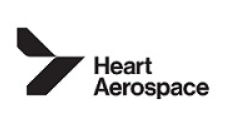RE: Comments of Heart Aerospace to Request for Information: Advanced Air Mobility (DOT-OST-2023-0079)
Heart Aerospace appreciates the opportunity to contribute to the Department of Transportation’s development of a national AAM strategy, and to the IWG’s further work in this area. Our company was founded on the promise of electric regional aircraft to make air travel more sustainable, affordable, and accessible. Collaboration among the participants in the emerging AAM ecosystem – especially governments at the federal, state, and local levels – is crucial to realize these benefits for the traveling public.
Heart looks forward to engaging with the Department and the IWG agencies on a broad range of topics as we proceed with the development, certification, and entry into service of our ES-30 aircraft (described below). For the purposes of these comments, we have chosen to highlight four priorities that are especially relevant to Heart at our current stage of growth:
• Include eCTOL aircraft in AAM strategies and priorities. As discussed below, we believe that electric conventional take-off and landing (“eCTOL”) aircraft like Heart’s ES-30 will be one of the earliest viable use cases for AAM technologies. The national AAM strategy should reflect this timing and prioritize activities that are necessary to support integration of eCTOL aircraft into the national airspace before the end of this decade.
• Prioritize regulatory harmonization. Heart is pursuing certification of our ES-30 under European Aviation Safety Agency (“EASA”) certification standard CS-25, but we have many current and potential customers who plan to operate our aircraft under FAA authority. Harmonized regulatory approaches across jurisdictions will help to accelerate the integration of eCTOL aircraft and the transformative benefits of AAM technologies.
• Prepare airport infrastructure for electrified flight. The Department should support collaboration between airports, utilities, grid operators, technology companies, and other stakeholders to evaluate their readiness to accommodate electric aircraft. In addition, aircraft like the ES-30 could create new opportunities for underutilized airports that need to be prepared for increased passenger traffic as well as electrification.
• Ensure adequate Federal funding & investment opportunities to support eCTOL development. There are currently a range of Federal funding and investment opportunities that will undoubtedly help accelerate aviation decarbonization. The Department should be mindful to ensure that funding is channeled equitably to support the various clean aviation energy source pathways including battery electric, hydrogen, and sustainable aviation fuel (“SAF”).
Additional detail regarding each of these priorities is discussed below in relation to the areas of interest identified by the Department.
Source : Heart Aerospace







Be the first to comment on "Heart Aerospace joins Regional Airline Association"